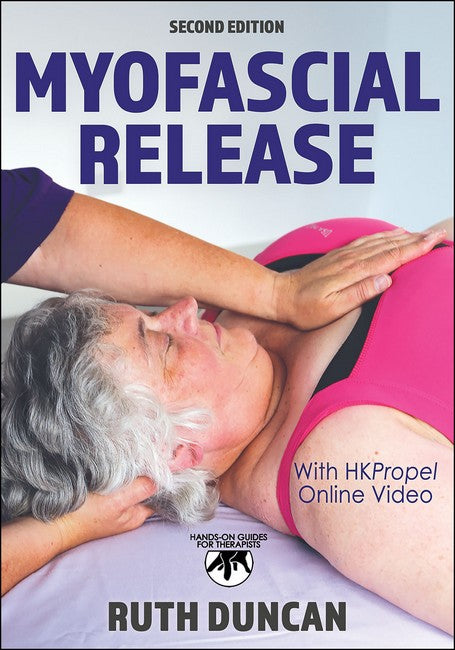Ruth Duncan, BSc (Hons), MSMTO, MAPNT, is an advanced myofascial release therapist, proprietor, instructor, guest lecturer, speaker, national committee member and writer with extensive training in a variety of approaches. She completed her advanced postgraduate training in 2004 with John F. Barnes (the world's leading authority on myofascial release) and has assisted with his seminars in the United States. Duncan also has explored other direct and nondirect fascial approaches, including Thomas Myers' anatomy trains and myofascial meridians, Erik Dalton's myoskeletal alignment techniques and Jean-Pierre Barral's visceral manipulation. She has studied with experts on myriad topics to learn more about human anatomy, function and dysfunction, and the emotional aspects of chronic pain and healing. Duncan graduated with honours as a clinical massage therapist from the Humanities Center School of Massage (now the Cortiva Institute) in Florida, United States. She has a diploma in sports therapy from the Society of Sports Therapists and a diploma in sports and remedial massage from the Institute of Sport and Remedial Massage. She also has a BSc in health sciences from The Open University. She has been teaching myofascial release in the United Kingdom and internationally for over 15 years.
Request Academic Copy
Please copy the ISBN for submitting review copy form
Description
Part I. Getting Started With Myofascial Release Chapter 1. Introduction to Myofascial Release Elements of Fascia Conditions That Affect Fascia Myofascial Release Concepts MFR Versus Other Massage Modalities Benefits of MFR MFR Treatment Sessions Closing Remarks Quick Questions Chapter 2. Initial Assessment Client Consultation Medical History Physical Assessment Closing Remarks Quick Questions Chapter 3. Preparation and Communication Contraindications Equipment and Room Preparation Correct Body Mechanics Mental Preparation Therapist and Client Communication Effects of and Responses to MFR Closing Remarks Quick Questions Part II. MFR Applications Chapter 4. Palpatory and Physical Assessments Palpatory Assessment Tissue Mobility and Glide Traction and Compression Skin Rolling Rebounding Closing Remarks Quick Questions Chapter 5. MFR Technique Approaches How to Apply Every MFR Technique Cross-Hand Releases Longitudinal Plane Releases Compression Releases Transverse Plane Releases Scar Tissue and Adhesion Management Myofascial Mobilisations Combining Techniques Closing Remarks Quick Questions Part III. Applying MFR Techniques Chapter 6. Cross-Hand Release Approaches Leg Techniques Arm Techniques Torso Techniques Head and Neck Techniques Closing Remarks Quick Questions Chapter 7. Longitudinal Plane Releases Supine Pulls Prone Pulls Bilateral Pulls Oppositional and Side-Lying Pulls Closing Remarks Quick Questions Chapter 8. Compression Releases Soft Tissue Compression Techniques Joint Compression Techniques Closing Remarks Quick Questions Chapter 9. Transverse Plane Releases Pelvic Floor Techniques Respiratory Diaphragm Techniques Thoracic Inlet Techniques Transverse Plane Techniques at Joints Closing Remarks Quick Questions Chapter 10. Scar Tissue and Adhesion Management Scar Tissue Techniques Stacking the Position of Ease Techniques Direct Scar Tissue Release Techniques Closing Remarks Quick Questions Chapter 11. Myofascial Mobilisation Applying Myofascial Mobilization Myofascial Mobilization Techniques Closing Remarks Quick Questions Part IV. MFR Programs and Management Chapter 12. Combined Techniques and Taking MFR Further Myofascial Position of Ease Techniques Combining Techniques Closing Remarks Quick Questions Chapter 13. MFR Treatment Approaches Individual Treatment Approaches Intensive Treatment Approaches Multi-Therapist Treatment Approaches Home Programmes Closing Remarks Quick Questions Answers to Quick Questions References Photo Index
" The only other book I have seen of this caliber regarding myofascial release was the previous edition printed in 2014. This edition has outdone the previous edition, with the whole-person thinking now applied to myofascial release." (c) Doody's Review Service, 2022, RondaKae Vainikka, AAS, CNMT, BCTMB, Northwestern Health Sciences University (4-star review)

